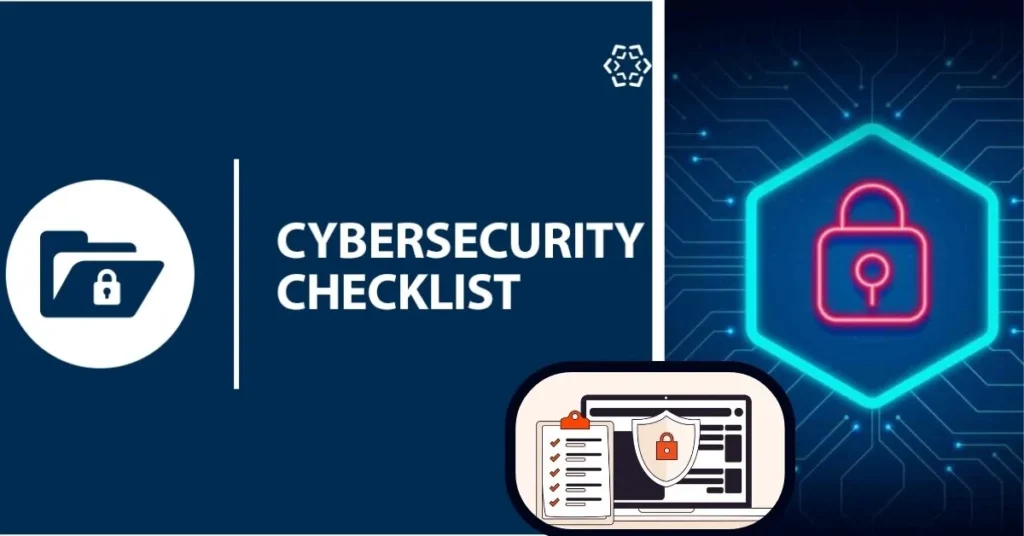Introduction to Cyber Security
In today’s digital landscape, the importance of protecting your data has never been more critical. Cyber threats lurk around every corner, waiting for a moment of vulnerability to strike. Whether you’re an individual safeguarding personal information or a business managing sensitive client data, understanding how to fortify your defenses is essential.
With increasing incidents of cyber attacks making headlines, it’s clear that ignorance isn’t bliss when it comes to online security. The good news? You don’t have to be a tech wizard to protect yourself and your assets. By following this comprehensive case cyber security checklist, you can take proactive steps toward securing your digital life like the pros do.
Let’s dive into what makes up effective cybersecurity strategies and how you can implement them today!
Importance of Cyber Security for Individuals and Businesses
Case cyber security checklist is crucial in today’s digital landscape. For individuals, it means safeguarding personal information like bank details and social media accounts from prying eyes. A single breach can lead to identity theft and financial loss.
For businesses, the stakes are even higher. Sensitive data about clients and employees must be protected to maintain trust. A cyber attack can cripple operations and damage reputations.
Moreover, regulatory compliance is another layer of importance for companies. Failing to adhere to established guidelines can result in hefty fines and legal issues.
Investing in cyber security isn’t just a precaution; it’s a necessity that enhances overall resilience against emerging threats. With the right measures in place, both individuals and organizations can navigate the online world more securely.
Understanding the Threats: Common Types of Cyber Attacks
Cyber attacks come in many forms, each with unique tactics and goals. One common type is phishing, where attackers masquerade as trusted entities to trick individuals into revealing sensitive information. This method often involves deceptive emails or websites.
Ransomware is another significant threat. It encrypts a victim’s files, demanding payment for access restoration. Businesses can suffer crippling downtime due to these malicious attacks.
Then there’s malware, which encompasses various software designed to disrupt or damage systems. From spyware that secretly gathers data to adware bombarding users with unwanted ads, the impact varies widely.
Denial-of-Service (DoS) attacks overwhelm networks with traffic, rendering services unavailable. These are particularly damaging for businesses relying on online operations.
Understanding these threats empowers individuals and organizations alike. Recognizing potential risks is the first step toward effective protection strategies against cybercrime.
Creating a Strong Password
Creating a strong password is one of the simplest yet most effective ways to protect your online accounts. A good password should be at least 12 characters long and include a mix of uppercase letters, lowercase letters, numbers, and special symbols.
Avoid using easily guessed information like birthdays or names. Instead, think creatively. Combine unrelated words or use phrases that are memorable but hard for others to guess.
Consider using a password manager. These tools can generate random passwords for you and store them securely. This way, you only need to remember one master password.
Regularly update your passwords too. Changing them every few months can significantly enhance your security posture.
Never reuse passwords across different sites. If one account gets compromised, it could jeopardize all your other accounts as well.
Utilizing Two-Factor Authentication
Two-factor authentication (2FA) adds an extra layer of security to your accounts. It requires not just a password, but also a second form of verification. This can be something you know, like a PIN, or something you have, such as a code sent to your phone.
Many online platforms now offer 2FA. Enabling it is straightforward and well worth the effort. Even if someone manages to steal your password, they still need that second piece of information to access your account.
Using apps like Google Authenticator or Authy can streamline this process further. They generate temporary codes that are time-sensitive and almost impossible for hackers to predict.
Embracing two-factor authentication isn’t merely about protecting data; it’s about building trust in digital interactions. Implementing this simple step significantly decreases vulnerability against unauthorized access and cyber threats.
Keeping Software and Systems Up-to-Date
Keeping software and systems up-to-date is crucial in the fight against cyber threats. Outdated applications can have vulnerabilities that hackers eagerly exploit.
Regular updates ensure your security patches are current. When a new version of software is released, it often addresses bugs or weaknesses identified since the last iteration. Ignoring these updates leaves you exposed to risks.
Activate automatic updates whenever possible. This simple step removes the need for constant manual checks and ensures you’re covered without extra effort.
Don’t overlook operating systems either. They form the backbone of your devices and require regular attention to remain secure.
Schedule periodic reviews of all installed software, removing anything no longer needed. Each unnecessary program is another potential entry point for an attacker looking to exploit vulnerabilities.
Regularly Backing Up Data
Regularly backing up data is a crucial step in safeguarding your digital assets. Think of it as an insurance policy for your information. Whether you’re an individual or a business, losing important files can be devastating.
Backing up your data ensures that you have copies available in case of hardware failures, cyber attacks, or accidental deletions. It’s not just about protecting against external threats; mistakes happen to everyone.
Choose between cloud storage and physical backups like external hard drives. Each has its pros and cons, so select what fits best with your needs.
Schedule regular backups to automate the process and minimize risks of missing updates. Additionally, consider using multiple locations for added security.
Remember: A backup is only useful if it’s easily accessible when you need it most! Stay proactive about this simple yet effective strategy to keep your information safe and sound.
Educating Yourself and Your Employees
Education is a cornerstone of effective cyber security. Understanding the threats and best practices can significantly reduce risks.
Start by offering training sessions on identifying phishing emails and suspicious links. Employees should be aware of the tactics hackers use to gain unauthorized access.
Regular workshops can keep everyone updated on new trends in cyber security. The digital landscape evolves quickly, and staying informed is crucial.
Encourage open discussions about potential breaches or concerns within your organization. A culture of sharing knowledge fosters vigilance among team members.
Provide resources such as articles or videos that highlight real-world examples of cyber attacks. This helps illustrate the importance of maintaining strong security measures daily.
Ensure that employees know who to contact if they suspect a threat or incident. Empowering them with information builds confidence in managing their own online safety.
Implementing Firewalls and Anti-Virus Software
Firewalls and antivirus software serve as essential defenses in your cybersecurity arsenal. They create a barrier between your network and potential threats, effectively filtering out unwanted traffic.
Implementing a firewall helps monitor incoming and outgoing data. This layer of protection blocks unauthorized access while allowing legitimate communication to flow freely.
Antivirus software scans for malware, viruses, and other harmful programs. By regularly updating this tool, you ensure it recognizes the latest threats.
Both tools work best in tandem. While firewalls keep intruders at bay, antivirus solutions protect against infections that slip through. Together, they form a robust line of defense for both personal devices and business networks.
Regularly reviewing configurations is key to maintaining effectiveness. Ensure your settings align with evolving security needs to stay one step ahead of cybercriminals.
Monitoring Network Activity
Monitoring network activity is crucial for maintaining a secure digital environment. It involves keeping an eye on data traffic and user behavior within your systems.
Regularly reviewing logs can reveal unusual patterns or unauthorized access attempts. These insights help you act quickly before minor issues escalate into significant breaches.
Using advanced tools makes this process easier. Solutions like intrusion detection systems (IDS) can automatically flag suspicious activities, allowing quicker responses.
Don’t overlook employee awareness in this area. Educating staff about recognizing potential threats contributes to a more robust security posture.
Ensure that monitoring practices comply with privacy regulations. Balancing vigilance and respect for user privacy establishes trust while enhancing security measures.
Responding to a Cyber Attack
The moment you suspect a cyber attack, swift action is crucial. Time is of the essence when it comes to damage control.
First, isolate affected systems immediately. Disconnect them from the network to prevent further spread or data loss. This step can save invaluable information.
Next, document everything. Keep detailed logs of what happened and any actions taken. This record will be essential for forensic investigations and potential legal matters later on.
Then, communicate with your team transparently. Ensure everyone understands their roles in mitigating the impact and restoring normal operations.
If necessary, reach out to cybersecurity professionals who specialize in incident response. Their expertise can provide insights that may not be apparent from within your organization.
Notify stakeholders if sensitive data has been compromised. Transparency builds trust even in tough times and helps maintain relationships with clients and partners alike.
Conclusion
Cyber security is not just a buzzword; it’s an essential strategy to safeguard sensitive information in our increasingly digital world. Whether you are managing personal data or running a business, understanding the importance of cyber security can’t be overstated.
The threats we face today are diverse and evolving. By familiarizing yourself with common attack methods, like phishing and ransomware, you can better prepare against them. Implementing strong passwords and utilizing two-factor authentication adds layers of protection that deter unauthorized access.
Keeping your software up-to-date ensures that you benefit from the latest security patches while regular backups protect against data loss in case of an incident. Education plays a crucial role too; ensure everyone involved understands their responsibilities regarding cyber safety.
Firewalls and anti-virus software serve as your first line of defense. Monitoring network activity allows for quick identification of suspicious behavior, providing another layer of vigilance needed to combat potential attacks effectively.
When faced with a cyber attack, having a response plan minimizes damage and accelerates recovery time. Each step taken strengthens your posture against future threats.
By following this case cyber security checklist, you’re not only protecting yourself but also fostering trust among clients and stakeholders who depend on your commitment to safeguarding their data.
Learn more about enhancing your security with our guide on cyber background checks.







